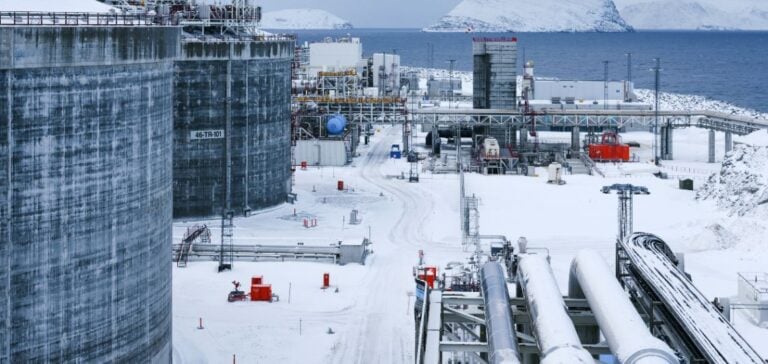Norway’s natural gas exports to Northwest Europe rebounded significantly in October following a marked decrease in September due to a heavy maintenance schedule. According to data analyzed by S&P Global Commodity Insights, Norwegian pipeline gas deliveries reached 9.56 billion cubic meters (Bcm) in October, compared to just 6.4 Bcm in the previous month, an increase of nearly 49%. This recovery also surpasses exports achieved during the same period last year by 5% and exceeds the five-year average for October, which stands at 9.38 Bcm.
Sustained Production to Compensate for Reduced Russian Volumes
Since the sharp reduction of Russian gas supplies in 2022, Norway has become the primary gas supplier to the European market. Norwegian producers have ramped up production and optimized exports to compensate for the drop in Russian volumes and take advantage of historically high prices, particularly during the summer of 2022, when prices peaked.
In 2023, cumulative pipeline gas exports for the January to October period totaled 93.2 Bcm, up 10% from the previous year. This volume is close to the level recorded during the same period in 2022, at 93.7 Bcm, a year considered a production peak for Norway according to the Norwegian Petroleum Directorate.
European Gas Prices and Winter Outlook
Despite high storage levels in Europe ahead of winter, gas prices remain sensitive. On November 5, the gas price on the TTF market for next month’s deliveries stood at €40.37/MWh, reflecting persistent volatility. Equinor’s Chief Financial Officer, Torgrim Reitan, noted that current prices reflect the ongoing “vulnerability” of the markets, exacerbated by a series of external factors, including Asian LNG demand and uncertainty surrounding the expiration of the Russia-Ukraine gas transit deal scheduled for the end of the year.
Reitan also highlighted the importance of weather conditions this winter. A normal winter season could reduce European gas storage levels to around 40% by next April, compared to 60% in April of this year, a difference that could impact prices throughout the winter period.






















